 Search by Keyword
|
"ANOTHER GIRL"
(John Lennon - Paul McCartney)
“I really got lumbered with bass,” Paul McCartney explained about his signature musical instrument. “Nobody actually wanted to play bass, that’s why Stuart (Sutcliffe) was playing it. We all wanted really to be guitarists, and we were three guitar players to start off with.”
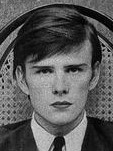 Paul’s aspirations to being a guitarist didn’t diminish as he reluctantly took up the dreaded bass guitar after Stuart Sutcliffe left the group. Although he did dabble a little with other instruments on earlier Beatles recordings, he basically maintained his established role as bass guitarist throughout the first three years of The Beatles’ contract with the British Parlophone label. As a diversion, he would occasionally play some keyboards throughout that time, but this incredible musician was primarily known for holding that unique-looking violin-shaped Hofner bass guitar, which usually ended up quite low in the mix of those early Beatles recordings. Paul’s aspirations to being a guitarist didn’t diminish as he reluctantly took up the dreaded bass guitar after Stuart Sutcliffe left the group. Although he did dabble a little with other instruments on earlier Beatles recordings, he basically maintained his established role as bass guitarist throughout the first three years of The Beatles’ contract with the British Parlophone label. As a diversion, he would occasionally play some keyboards throughout that time, but this incredible musician was primarily known for holding that unique-looking violin-shaped Hofner bass guitar, which usually ended up quite low in the mix of those early Beatles recordings.
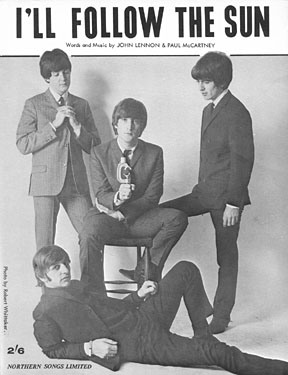 By 1965, however, Paul McCartney couldn’t hold back his desire to show the world what he could do as a lead guitarist. On their first two recording sessions of the year, Paul somehow managed to temporarily usurp George Harrison’s lead guitar role. The timing was apparently right for this move since a new Harrison composition called “I Need You” was also being recorded during these sessions. While George could sometimes show his irritation when someone else wanted to play lead guitar (“I am supposed to be the lead guitarist in this band, after all” he complained when John was going to do the solo in “I’ll Follow The Sun” four months earlier), having a new song recorded in the same sessions must have dampened the blow a little. By 1965, however, Paul McCartney couldn’t hold back his desire to show the world what he could do as a lead guitarist. On their first two recording sessions of the year, Paul somehow managed to temporarily usurp George Harrison’s lead guitar role. The timing was apparently right for this move since a new Harrison composition called “I Need You” was also being recorded during these sessions. While George could sometimes show his irritation when someone else wanted to play lead guitar (“I am supposed to be the lead guitarist in this band, after all” he complained when John was going to do the solo in “I’ll Follow The Sun” four months earlier), having a new song recorded in the same sessions must have dampened the blow a little.
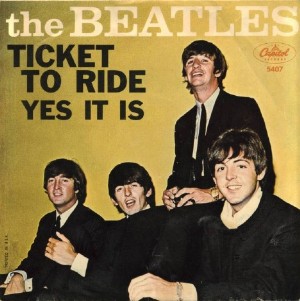 Paul first played lead guitar on “Ticket To Ride,” which was recorded on the first recording session of the year. He then continued in that role the following day by overdubbing a rambling lead guitar part throughout the entire song “Another Girl” which was started the day before. After getting a good taste of the limelight on these two days, he managed to jump right back into this position on many occasions throughout The Beatles career. Paul first played lead guitar on “Ticket To Ride,” which was recorded on the first recording session of the year. He then continued in that role the following day by overdubbing a rambling lead guitar part throughout the entire song “Another Girl” which was started the day before. After getting a good taste of the limelight on these two days, he managed to jump right back into this position on many occasions throughout The Beatles career.
Songwriting History
“’Another Girl’ is Paul,” said John Lennon in 1980, which verifies the song to be a 100% McCartney composition. Another fact that helps establish this is that it was written while Paul was out of the country on his own.
 Thanks to Paul’s book “Many Years From Now,” we can isolate not only a ten day time-frame when the song was written and the location, but even the room it was written in. Between the dates of February 4th and 14th of 1965, Paul was on a vacation in Hammamet, which is a seaside resort in Tunisia, as a guest of the British government. This would account for his not being present at Ringo and Maureen’s wedding on February 11th, 1965. Paul's vacation was arranged by Brian Epstein’s associate Peter Brown – the same Peter Brown who later arranged for John and Yoko to “get married in Gibraltar near Spain.” Thanks to Paul’s book “Many Years From Now,” we can isolate not only a ten day time-frame when the song was written and the location, but even the room it was written in. Between the dates of February 4th and 14th of 1965, Paul was on a vacation in Hammamet, which is a seaside resort in Tunisia, as a guest of the British government. This would account for his not being present at Ringo and Maureen’s wedding on February 11th, 1965. Paul's vacation was arranged by Brian Epstein’s associate Peter Brown – the same Peter Brown who later arranged for John and Yoko to “get married in Gibraltar near Spain.”
 At one end of the house was, as author Barry Miles describes it, “a magnificent bathroom with a sunken bath and decorated throughout with Islamic tiles. It was isolated and the acoustics were ideal for songwriting.” It was in this bathroom that Paul wrote “Another Girl” in its entirety. At one end of the house was, as author Barry Miles describes it, “a magnificent bathroom with a sunken bath and decorated throughout with Islamic tiles. It was isolated and the acoustics were ideal for songwriting.” It was in this bathroom that Paul wrote “Another Girl” in its entirety.
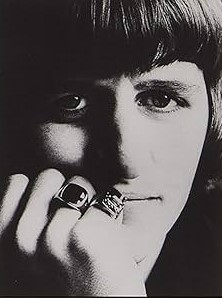 In defending the song as being viewed as a “filler” for the album, Paul also gives us a glimpse as to how newly written songs were chosen for Beatles albums. “It’s a bit much to call them fillers because I think they were a bit more than that, and each one of them made it past The Beatles test. We all had to like it. If anyone didn’t like one of our songs it was vetoed. It could be vetoed by one person. If Ringo said; ‘I don’t like that one,’ we wouldn’t do it, or we’d have to really persuade him.” In defending the song as being viewed as a “filler” for the album, Paul also gives us a glimpse as to how newly written songs were chosen for Beatles albums. “It’s a bit much to call them fillers because I think they were a bit more than that, and each one of them made it past The Beatles test. We all had to like it. If anyone didn’t like one of our songs it was vetoed. It could be vetoed by one person. If Ringo said; ‘I don’t like that one,’ we wouldn’t do it, or we’d have to really persuade him.”
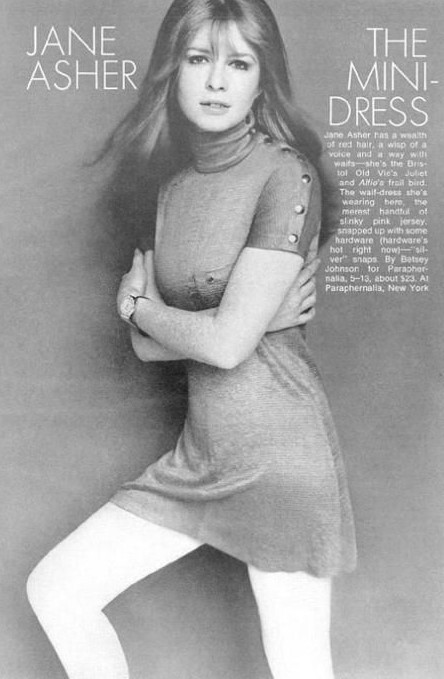 The subject of the song, though not directly related, was thought to be inspired by Paul’s open relationship with girlfriend Jane Asher whom he lived with in her family home. “I wasn’t married to Jane,” Paul explains, “I was pretty free. I remember John very much envying me. He said, ‘Well, if you go out with another girl, what does Jane think?’ and I said, ‘Well, I don’t care what she thinks, we’re not married. We’ve got a perfectly sensible relationship.’” Paul never admitted to anything other than “one-night stands” during his relationship with Jane (mostly occurring at his secret London apartment) so the subject matter of finding “another girl who will love me till the end, through thick and thin” was apparently thought to be more palatable to the record-buying public. The subject of the song, though not directly related, was thought to be inspired by Paul’s open relationship with girlfriend Jane Asher whom he lived with in her family home. “I wasn’t married to Jane,” Paul explains, “I was pretty free. I remember John very much envying me. He said, ‘Well, if you go out with another girl, what does Jane think?’ and I said, ‘Well, I don’t care what she thinks, we’re not married. We’ve got a perfectly sensible relationship.’” Paul never admitted to anything other than “one-night stands” during his relationship with Jane (mostly occurring at his secret London apartment) so the subject matter of finding “another girl who will love me till the end, through thick and thin” was apparently thought to be more palatable to the record-buying public.
Recording History
 The first recording session of 1965 took place in EMI Studio Two on February 15th. This happened to be the first of six consecutive sessions intended to produce songs for the soundtrack of their new movie, eventually to be titled “Help!” The early session on this day was spent completely recording “Ticket To Ride,” while the evening session from 7 to 10:30 pm began with recording Paul’s recently written “Another Girl” while it was fresh in his mind. The first recording session of 1965 took place in EMI Studio Two on February 15th. This happened to be the first of six consecutive sessions intended to produce songs for the soundtrack of their new movie, eventually to be titled “Help!” The early session on this day was spent completely recording “Ticket To Ride,” while the evening session from 7 to 10:30 pm began with recording Paul’s recently written “Another Girl” while it was fresh in his mind.
 Since they adopted a new recording technique on this day that resulted in them rehearsing a song repeatedly with the tape rolling and then spooling back the tape to record over the rehearsals, Paul took this opportunity to teach the group his new song. When they learned the song adequately enough, they started recording the rhythm track, which comprised Paul on bass, John on electric rhythm guitar, George on acoustic rhythm guitar and Ringo on drums. While the tape box shows there only was one take needed to complete the rhythm track, an audible click as well as a drop in volume of the acoustic guitar and cymbals at the end of the first minute of the song seems to indicate that the complete rhythm track take was an edit of two attempts, or possibly a section of the rhythm track that was edited out. "That's pretty straight country," Paul states while listening to this rhythm track on his 2021 Hulu documentary series "McCartney 3,2,1." "Me and Ringo always kind of knew, y'know, if we don't get this right, this is going to on the record, we've screwed it. It's kind of a little bit scary. You had to get it." Since they adopted a new recording technique on this day that resulted in them rehearsing a song repeatedly with the tape rolling and then spooling back the tape to record over the rehearsals, Paul took this opportunity to teach the group his new song. When they learned the song adequately enough, they started recording the rhythm track, which comprised Paul on bass, John on electric rhythm guitar, George on acoustic rhythm guitar and Ringo on drums. While the tape box shows there only was one take needed to complete the rhythm track, an audible click as well as a drop in volume of the acoustic guitar and cymbals at the end of the first minute of the song seems to indicate that the complete rhythm track take was an edit of two attempts, or possibly a section of the rhythm track that was edited out. "That's pretty straight country," Paul states while listening to this rhythm track on his 2021 Hulu documentary series "McCartney 3,2,1." "Me and Ringo always kind of knew, y'know, if we don't get this right, this is going to on the record, we've screwed it. It's kind of a little bit scary. You had to get it."
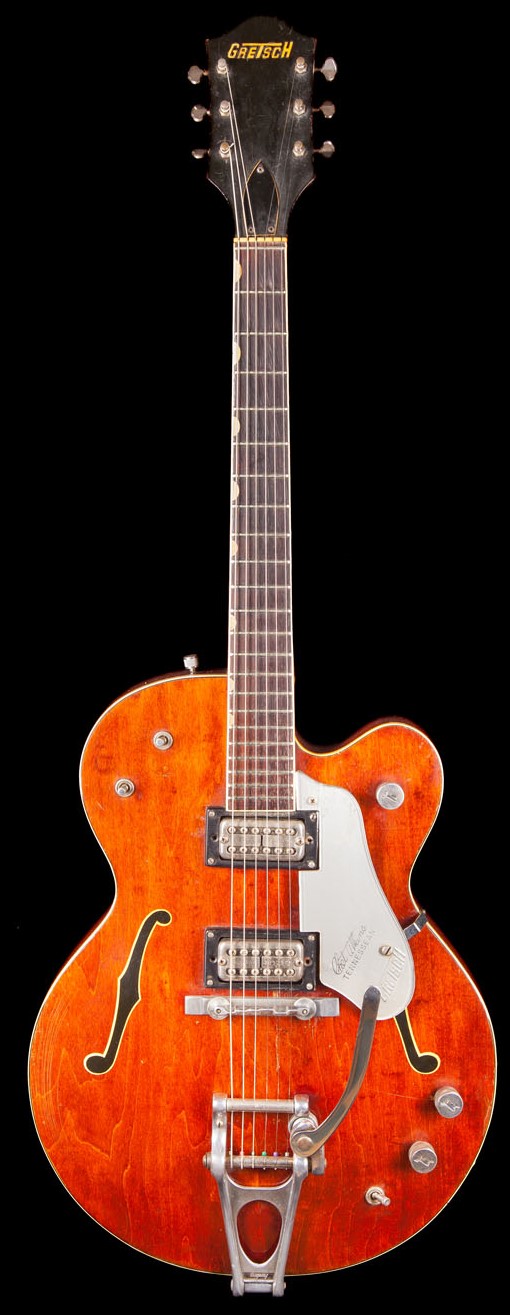 After this was complete, Paul overdubbed his lead vocals, John and George overdubbed their backing vocals, and then Paul and John double-tracked their vocals. As a finishing touch to the song, George worked at adding a guitar flourish at the end of the song, taping ten edit pieces to get it right. The seventh edit piece was viewed as the best, which featured George using the tremolo arm of his guitar which, according to George Martin's personal notes, was his 1963 Gretsch 6119 Tennesean. George Martin also mentions a "tom tom" overdub by Ringo which may very well have been performed in conjunction with George's guitar edit pieces. By 8:30 pm (according to George Martin's notes) the song was considered complete and they moved on to George’s “I Need You.” After this was complete, Paul overdubbed his lead vocals, John and George overdubbed their backing vocals, and then Paul and John double-tracked their vocals. As a finishing touch to the song, George worked at adding a guitar flourish at the end of the song, taping ten edit pieces to get it right. The seventh edit piece was viewed as the best, which featured George using the tremolo arm of his guitar which, according to George Martin's personal notes, was his 1963 Gretsch 6119 Tennesean. George Martin also mentions a "tom tom" overdub by Ringo which may very well have been performed in conjunction with George's guitar edit pieces. By 8:30 pm (according to George Martin's notes) the song was considered complete and they moved on to George’s “I Need You.”
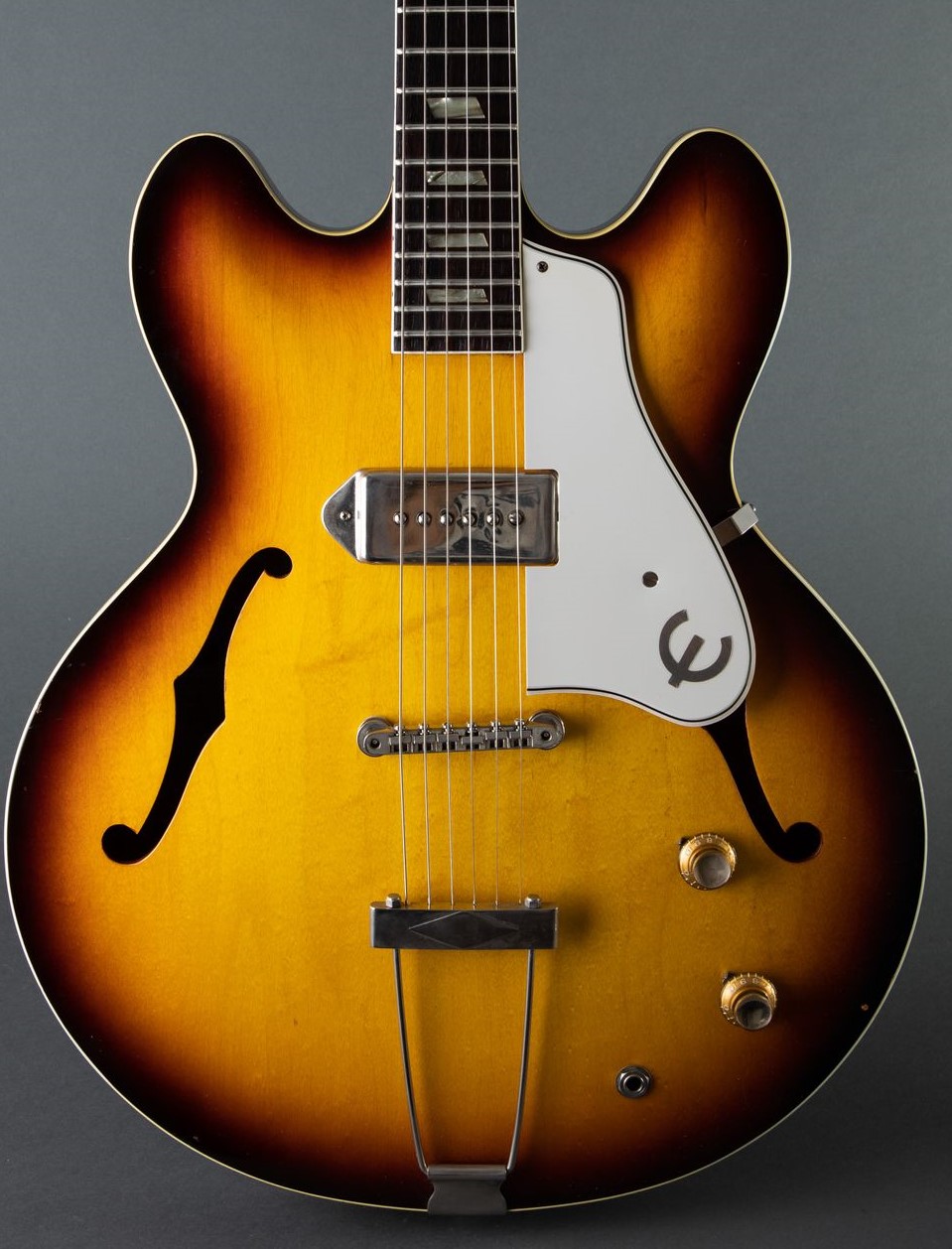 By the time they entered EMI Studio Two the following day (February 16th, 1965), a decision was made to forego the ending guitar flourish taped the previous day. The earlier session on this day started at 2:30 pm and began with finishing up “I Need You.” At about 4 pm, Paul picked up his Epiphone Casino electric guitar and overdubbed lead guitar passages throughout “Another Girl,” including an extended conclusion to the song in place of George’s attempt the day before. By 5 pm the song was finished, with two later sessions that day resulting in fully recording the song "Yes It Is." By the time they entered EMI Studio Two the following day (February 16th, 1965), a decision was made to forego the ending guitar flourish taped the previous day. The earlier session on this day started at 2:30 pm and began with finishing up “I Need You.” At about 4 pm, Paul picked up his Epiphone Casino electric guitar and overdubbed lead guitar passages throughout “Another Girl,” including an extended conclusion to the song in place of George’s attempt the day before. By 5 pm the song was finished, with two later sessions that day resulting in fully recording the song "Yes It Is."
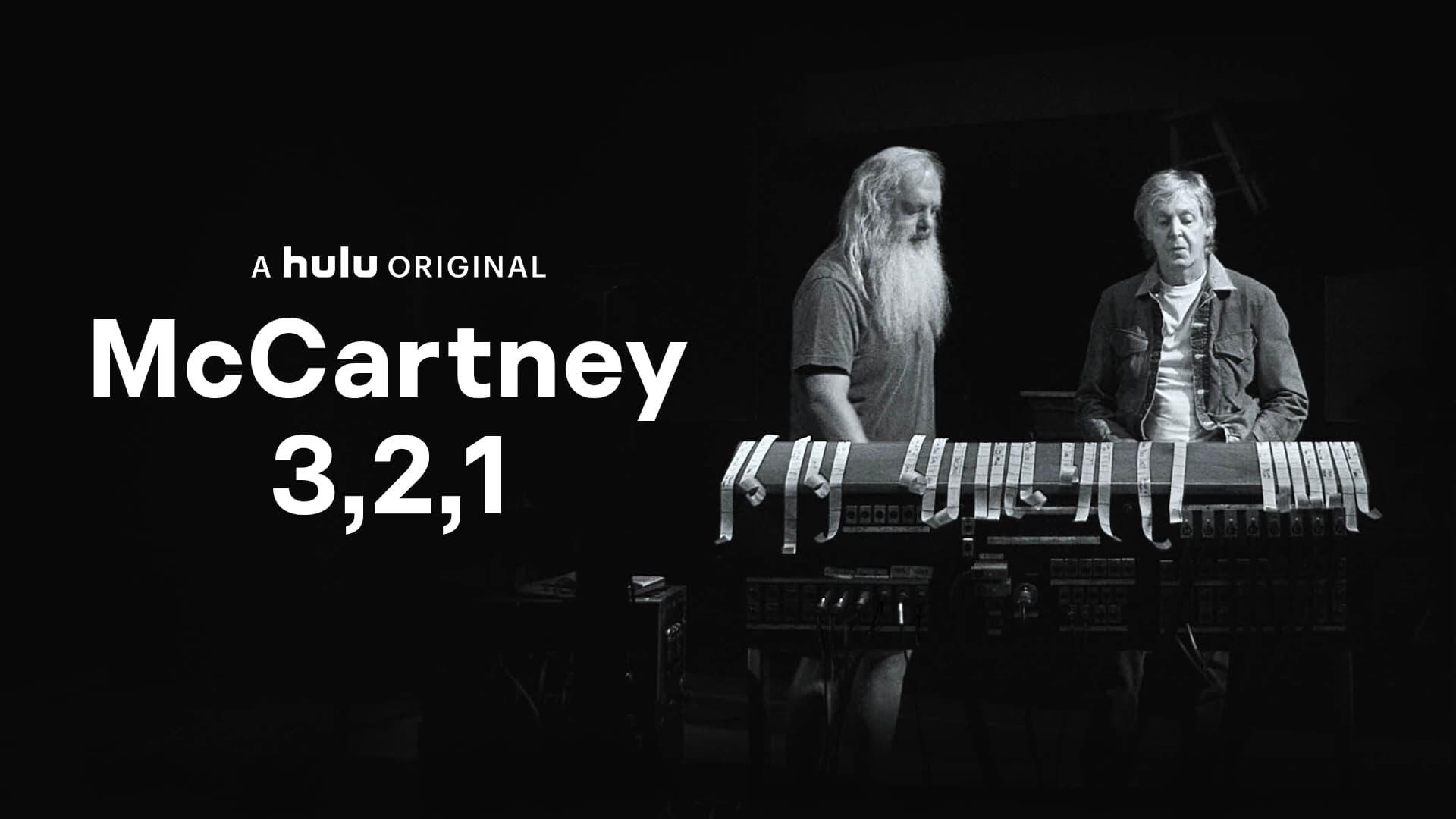 "Bold mistakes! That's me, I specialize in bold mistakes," Paul remarks in his "McCartney 3,2,1" Hulu documentary about his lead guitar work in this song. I mean that, the fully thing now, 'cause you've got the opportunity to go back in, I would have, (with) those couple of licks that I've missed...you can see I got stuck...you'd go back in and fix that, but there's kind of an innocence. 'No, he didn't make a mistake, he was just enthusiastic!!'" "Bold mistakes! That's me, I specialize in bold mistakes," Paul remarks in his "McCartney 3,2,1" Hulu documentary about his lead guitar work in this song. I mean that, the fully thing now, 'cause you've got the opportunity to go back in, I would have, (with) those couple of licks that I've missed...you can see I got stuck...you'd go back in and fix that, but there's kind of an innocence. 'No, he didn't make a mistake, he was just enthusiastic!!'"
 The mono mix of the song was prepared on February 18th, 1965 in the control room of EMI Studio Two by George Martin and engineers Norman Smith and Ken Scott. This mix was used in the British mono version of the album “Help!” as well as the first prints of the movie. The rhythm track is mixed slightly quieter in this mono mix. The mono mix of the song was prepared on February 18th, 1965 in the control room of EMI Studio Two by George Martin and engineers Norman Smith and Ken Scott. This mix was used in the British mono version of the album “Help!” as well as the first prints of the movie. The rhythm track is mixed slightly quieter in this mono mix.
 The stereo mix was made on February 23rd, 1965 in the control room of EMI Studio Two, but this time George Martin left the work to engineer Norman Smith and 2nd engineer Malcolm Davies. This mix is virtually the same except for a slightly louder rhythm track. The stereo mix was made on February 23rd, 1965 in the control room of EMI Studio Two, but this time George Martin left the work to engineer Norman Smith and 2nd engineer Malcolm Davies. This mix is virtually the same except for a slightly louder rhythm track.
With the compact disc era in full bloom in 1986, George Martin decided to revisit the master tapes to make a superior stereo mix of the entire British “Help!” album, including “Another Girl.” Although the modifications were minimal, this is the stereo mix most generally available today.
Song Structure and Style
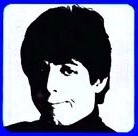 The format used for this song appears on the surface to be quite unusual but, upon closer inspection, is very usual for The Beatles up to this point. Identifying the key phrase of the song, namely where the lyrics “for I have got another girl” are found, as actually the last four measures of the verse helps us to properly categorize this song in the ‘verse/ verse/ bridge/ verse’ structure (or aaba). What may trip us up here is that these last four measures are also utilized as the introduction to the song. Paul is such a tricky guy! The format used for this song appears on the surface to be quite unusual but, upon closer inspection, is very usual for The Beatles up to this point. Identifying the key phrase of the song, namely where the lyrics “for I have got another girl” are found, as actually the last four measures of the verse helps us to properly categorize this song in the ‘verse/ verse/ bridge/ verse’ structure (or aaba). What may trip us up here is that these last four measures are also utilized as the introduction to the song. Paul is such a tricky guy!
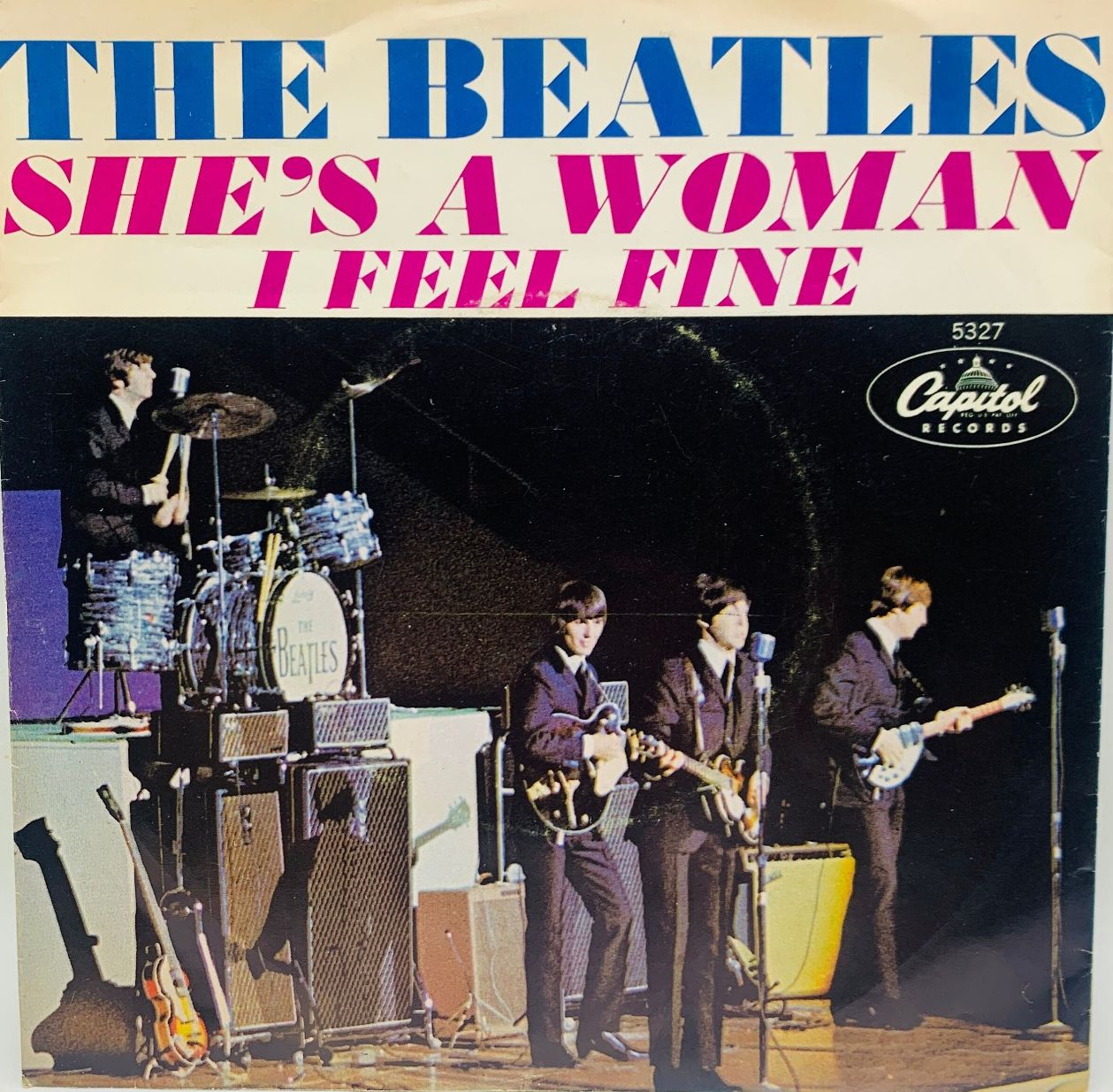 This introduction can actually be considered as being an odd five measures long since the a cappella vocal introduction of the song (on the words “for I have got”) comes in well before the downbeat where the instruments come in. The trick of precluding the song vocally before the one beat is something The Beatles have been doing somewhat regularly, evidenced by the similarly styled “Can’t Buy Me Love” among others. In fact the swing style of rhythm heard in both of these songs is becoming a favorite of Paul’s, one also heard in the recently released “She’s A Woman.” This introduction can actually be considered as being an odd five measures long since the a cappella vocal introduction of the song (on the words “for I have got”) comes in well before the downbeat where the instruments come in. The trick of precluding the song vocally before the one beat is something The Beatles have been doing somewhat regularly, evidenced by the similarly styled “Can’t Buy Me Love” among others. In fact the swing style of rhythm heard in both of these songs is becoming a favorite of Paul’s, one also heard in the recently released “She’s A Woman.”
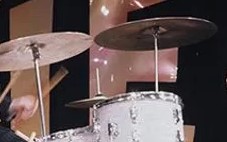 The full instrumentation kicks in right from the beginning; Ringo riding his swing beat on the ride cymbal, George on steady rhythm guitar, John with staccato guitar stabs on the off-beats (reminiscent of his guitar work on “She’s A Woman”) and Paul on bass. McCartney’s overdubbed wiry lead guitar part is also immediately present as are John and George’s harmony vocals. Since no instrumental section or solo is required, all of the elements of the song appear within the first four seconds. This introduction also shows the song flirting with A minor as the home key while, in actuality, A major is identified as the true home key when the first verse appears. For consistency's sake, whenever this portion of the verse reappears, A minor is played once again. The full instrumentation kicks in right from the beginning; Ringo riding his swing beat on the ride cymbal, George on steady rhythm guitar, John with staccato guitar stabs on the off-beats (reminiscent of his guitar work on “She’s A Woman”) and Paul on bass. McCartney’s overdubbed wiry lead guitar part is also immediately present as are John and George’s harmony vocals. Since no instrumental section or solo is required, all of the elements of the song appear within the first four seconds. This introduction also shows the song flirting with A minor as the home key while, in actuality, A major is identified as the true home key when the first verse appears. For consistency's sake, whenever this portion of the verse reappears, A minor is played once again.
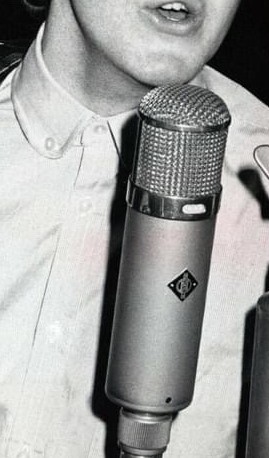 The first verse, as with all of the verses, is sixteen measures long and includes The Beatles' trademark “break” in the twelfth measure, no doubt arranged that way to coincide with Paul’s use of the word “stop” in the second verse. Paul sings solo throughout until the fourteenth measure where John and George kick in with their harmonized “another girl” vocals as heard identically in the introduction. For the first verse, Paul doesn’t regale us with any lead guitar frills until the last four measures. The first verse, as with all of the verses, is sixteen measures long and includes The Beatles' trademark “break” in the twelfth measure, no doubt arranged that way to coincide with Paul’s use of the word “stop” in the second verse. Paul sings solo throughout until the fourteenth measure where John and George kick in with their harmonized “another girl” vocals as heard identically in the introduction. For the first verse, Paul doesn’t regale us with any lead guitar frills until the last four measures.
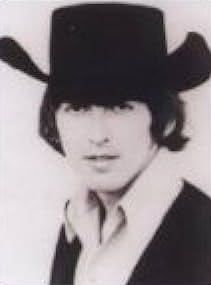 The second verse is structurally identical but includes one instrumental addition, this being Paul’s lead guitar flourishes whenever he takes a breath vocally. Interestingly, as the verse ends, we see another example of a lyrical thought transcending from the verse to the bridge, this case with the sentence “another girl / who will love me till the end.” George Harrison picked up on this trick with his song “You Like Me Too Much,” which was recorded by the group two days later. The second verse is structurally identical but includes one instrumental addition, this being Paul’s lead guitar flourishes whenever he takes a breath vocally. Interestingly, as the verse ends, we see another example of a lyrical thought transcending from the verse to the bridge, this case with the sentence “another girl / who will love me till the end.” George Harrison picked up on this trick with his song “You Like Me Too Much,” which was recorded by the group two days later.
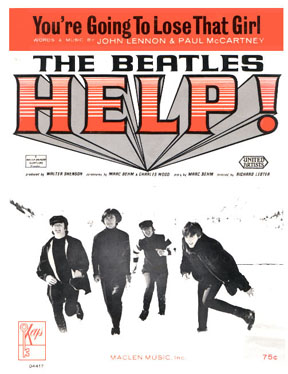 This eight-measure bridge does something very unique for The Beatles up to this point, that being an actual modulation to a different key. The song is in A major throughout but switches to C major for the bridges only. John mimics this idea identically with the structure of his song “You’re Going To Lose That Girl,” which was recorded four days later. This eight-measure bridge does something very unique for The Beatles up to this point, that being an actual modulation to a different key. The song is in A major throughout but switches to C major for the bridges only. John mimics this idea identically with the structure of his song “You’re Going To Lose That Girl,” which was recorded four days later.
Other unique elements in this bridge are the full three-part harmonies heard throughout as well as John slightly altering his guitar chop pattern to a more syncopated style. Also, there is a notable lift in the melody line on the lyrics “through thick and thin,” making this section the highest register of Paul’s vocals in the whole song. While the bluesy swing-style in this track has been used by him on other occasions, such as the aforementioned “Can’t Buy Me Love” and “She’s A Woman,” Paul is singing in a more relaxed lower register throughout this song rather than at the top of his voice on these other tracks. The bridge is the only time he reaches beyond a subdued comfortable level.
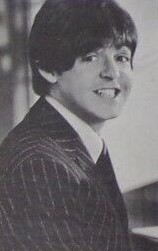 One final element worth mentioning in this first bridge is Paul’s flubbed final note in his guitar flourish, which sounds as if he missed the string. The only explanation why this was left in has to be the time crunch, having to complete as many contenders for their second motion picture as they could within this week. One final element worth mentioning in this first bridge is Paul’s flubbed final note in his guitar flourish, which sounds as if he missed the string. The only explanation why this was left in has to be the time crunch, having to complete as many contenders for their second motion picture as they could within this week.
A third verse is then heard with Paul offering another lead guitar line in the fourth measure but this time giving it a rest in the eighth measure. He does get a little more innovative with his guitar work in the last four measures of the verse, which transitions into an identical repeat of the bridge. Paul plays an identical guitar flourish at the end of this bridge, but this time he doesn’t flub the last note.
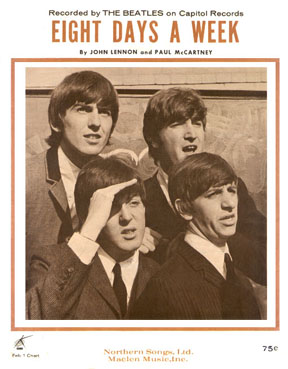 The final verse is then heard, which is an identical repeat of the third verse, although it is extended to nineteen measures to act as a fitting conclusion to the song. The title of the song is repeated three times to drill the point home as is a usual practice for The Beatles, such as witnessed in “Eight Days A Week” for instance. The song actually extends beyond this point to an unidentified measure count due to Paul’s aimless trailing guitar lick. The final verse is then heard, which is an identical repeat of the third verse, although it is extended to nineteen measures to act as a fitting conclusion to the song. The title of the song is repeated three times to drill the point home as is a usual practice for The Beatles, such as witnessed in “Eight Days A Week” for instance. The song actually extends beyond this point to an unidentified measure count due to Paul’s aimless trailing guitar lick.
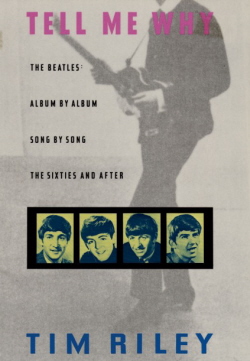 Paul is definitely center stage on this track, singing double-tracked lead vocals, and playing proficient bouncing bass and lead guitar. While his guitar work, as described by Tim Riley in his book “Tell Me Why,” sounds “like a drunken commentary” and “like he’s tripping all over himself,” we mustn’t feel as if he was incapable. He most certainly redeemed himself in this role many times over later in The Beatles career, such as on “Taxman” and “Good Morning, Good Morning.” Paul is definitely center stage on this track, singing double-tracked lead vocals, and playing proficient bouncing bass and lead guitar. While his guitar work, as described by Tim Riley in his book “Tell Me Why,” sounds “like a drunken commentary” and “like he’s tripping all over himself,” we mustn’t feel as if he was incapable. He most certainly redeemed himself in this role many times over later in The Beatles career, such as on “Taxman” and “Good Morning, Good Morning.”
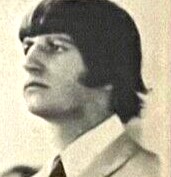 Both John and George’s instrumental contributions to the song may be rudimentary, consisting of two types of rhythm guitar playing, but their excellent backing vocals fill out the coherent arrangement very nicely. Ringo is to be commended as well for his lazy swing beat, which never strays from his ride cymbal except for the quickly grasped crash before each break in the verses and his occasional introductory drum fill after the break. Both John and George’s instrumental contributions to the song may be rudimentary, consisting of two types of rhythm guitar playing, but their excellent backing vocals fill out the coherent arrangement very nicely. Ringo is to be commended as well for his lazy swing beat, which never strays from his ride cymbal except for the quickly grasped crash before each break in the verses and his occasional introductory drum fill after the break.
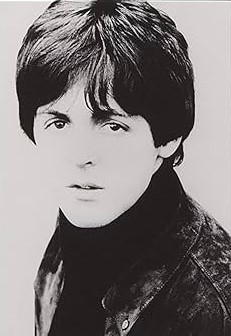 Paul’s lyrics are quite crass as Beatles lyrics go up to that point. He is actually addressing a girl who appears jealous of his possible interest in another woman, telling her that “as from today” he is replacing her with “somebody that’s new.” The manner in which he informs her is very unfeeling as well, harshly saying “I ain’t no fool and I don’t take what I don’t want.” The song is actually half dumping his current girlfiend to her face, and half a testament to how wonderful his new girlfriend is. “Nobody in all the world can do what she can do,” he insinuates to his former girl. He also throws in a boast about how worldly wise he is in saying “she’s sweeter than all the girls and I’ve met quite a few.” So when it comes to her insisting that they are still a couple, Paul reiterates, “so, I’m telling you this time, you better stop.” Paul’s lyrics are quite crass as Beatles lyrics go up to that point. He is actually addressing a girl who appears jealous of his possible interest in another woman, telling her that “as from today” he is replacing her with “somebody that’s new.” The manner in which he informs her is very unfeeling as well, harshly saying “I ain’t no fool and I don’t take what I don’t want.” The song is actually half dumping his current girlfiend to her face, and half a testament to how wonderful his new girlfriend is. “Nobody in all the world can do what she can do,” he insinuates to his former girl. He also throws in a boast about how worldly wise he is in saying “she’s sweeter than all the girls and I’ve met quite a few.” So when it comes to her insisting that they are still a couple, Paul reiterates, “so, I’m telling you this time, you better stop.”
As if to soften the blow, Paul begins the third verse by explaining “I don’t want to say that I’ve been unhappy with you.” But, she’s just going to have to accept that she’s out. After all, he IS Paul McCartney!
American Releases
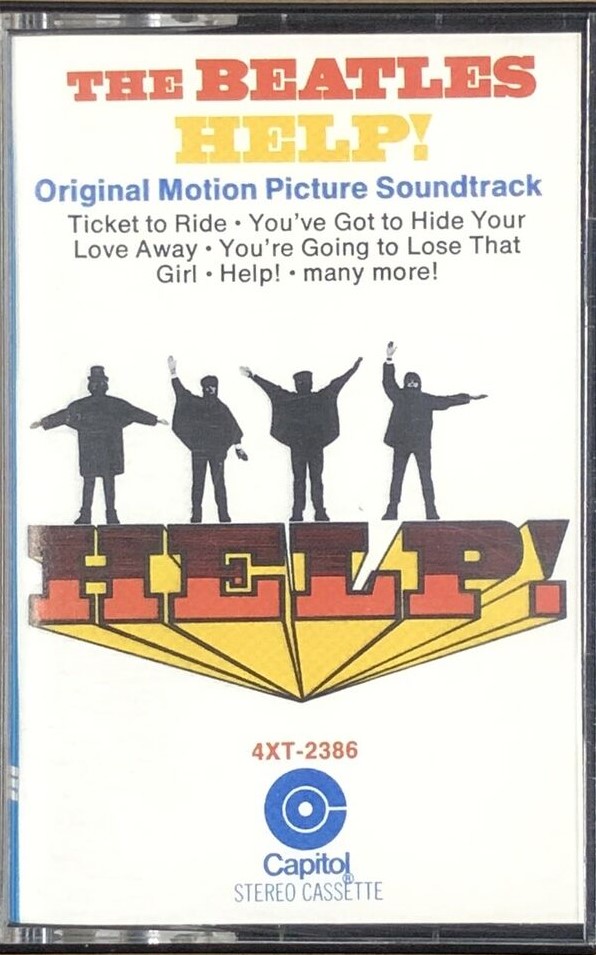 August 13th, 1965 was the date that America had their first chance to own “Another Girl” on the Capitol soundtrack album to the movie “Help!” The 1965 mono mix was not used on the mono version of this album, Capitol deciding to create their own “type B” mono mix by combining both channels of the stereo mix. The original mono mix, therefore, was not heard in the states for many decades. This soundtrack album was released on an individual compact disc on January 21st, 2014, both the mono and the stereo mixes being contained on a single CD. August 13th, 1965 was the date that America had their first chance to own “Another Girl” on the Capitol soundtrack album to the movie “Help!” The 1965 mono mix was not used on the mono version of this album, Capitol deciding to create their own “type B” mono mix by combining both channels of the stereo mix. The original mono mix, therefore, was not heard in the states for many decades. This soundtrack album was released on an individual compact disc on January 21st, 2014, both the mono and the stereo mixes being contained on a single CD.
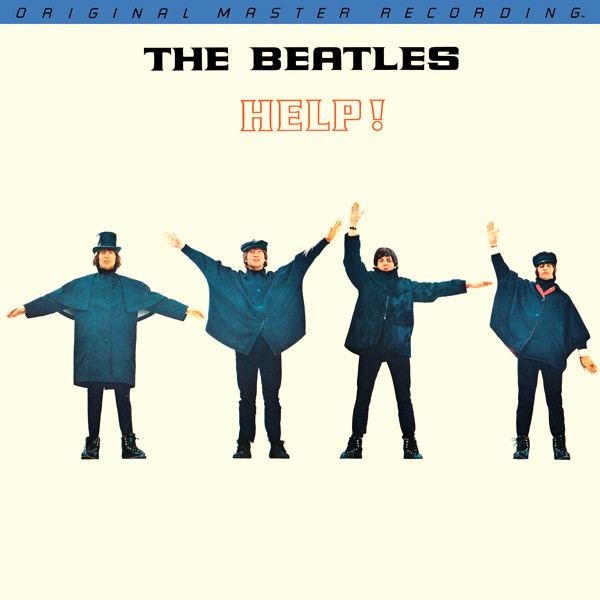 The first time the original British "Help!" album was made available in the US was the "Original Master Recording" vinyl edition released through Mobile Fidelity Sound Lab in January of 1986. This album included "Another Girl" and was prepared utilizing half-speed mastering technology from the original master tape on loan from EMI. This version of the album was only available for a short time and is quite collectible today. The first time the original British "Help!" album was made available in the US was the "Original Master Recording" vinyl edition released through Mobile Fidelity Sound Lab in January of 1986. This album included "Another Girl" and was prepared utilizing half-speed mastering technology from the original master tape on loan from EMI. This version of the album was only available for a short time and is quite collectible today.
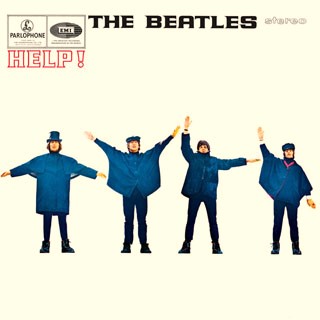 The full British “Help!” album was released in the US on April 30th, 1987 on CD and on July 21st, 1987 on vinyl. However, the original stereo mix was not used for these releases. George Martin created a new mix of “Another Girl” specifically for this release in 1986, which was also utilized for the remastered version of this CD released on September 9th, 2009 and on vinyl on November 13th, 2012. The full British “Help!” album was released in the US on April 30th, 1987 on CD and on July 21st, 1987 on vinyl. However, the original stereo mix was not used for these releases. George Martin created a new mix of “Another Girl” specifically for this release in 1986, which was also utilized for the remastered version of this CD released on September 9th, 2009 and on vinyl on November 13th, 2012.
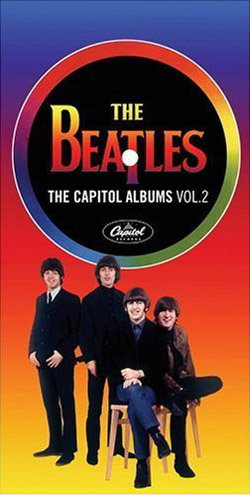 On April 11th, 2006, Capitol came out with their second box set comprising The Beatles albums as they were available in the '60s. This set, entitled “The Capitol Albums, Vol. 2,” contained the original US “Help!” soundtrack album, complete with all of the Ken Thorne instrumental music as well as “Another Girl.” On April 11th, 2006, Capitol came out with their second box set comprising The Beatles albums as they were available in the '60s. This set, entitled “The Capitol Albums, Vol. 2,” contained the original US “Help!” soundtrack album, complete with all of the Ken Thorne instrumental music as well as “Another Girl.”
Capitol issued a promotional disc entitled “7 Song Radio Sampler” to coincide with the November 6th, 2007 released “Help!” DVD. All seven Beatles songs from the film, including “Another Girl,” were included on this now rare CD.
 A unique collection of Beatles music was also released on compact disc on September 9th, 2009 titled “The Beatles In Mono.” For the first time in America, the original 1965 mono mix of “Another Girl” was included in this box set as well as the original 1965 stereo mix that hadn’t been available in the states since 1987. The vinyl edition of this box set was first released on September 9th, 2014. A unique collection of Beatles music was also released on compact disc on September 9th, 2009 titled “The Beatles In Mono.” For the first time in America, the original 1965 mono mix of “Another Girl” was included in this box set as well as the original 1965 stereo mix that hadn’t been available in the states since 1987. The vinyl edition of this box set was first released on September 9th, 2014.
Live Performances
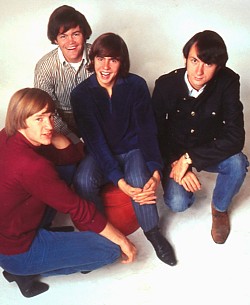 The only Beatles performance of “Another Girl” that ever materialized is the scene in the movie “Help!” that was filmed on February 27th, 1965 on Balmoral Island in the Bahamas. No doubt a precursor to the musical montage scenes in the television show “The Monkees,” this footage included The Beatles loosely miming the song while playing their instruments outdoors and sometimes playing each others' instruments as well. George pretends to play Paul’s guitar leads while John lays flat on the rocky shore playing his acoustic guitar, when he’s not playing Ringo’s drums, that is. Paul sometimes substitutes a bikini clad girl for his bass guitar, even accidentally touching her breast at the end of the third verse. The only Beatles performance of “Another Girl” that ever materialized is the scene in the movie “Help!” that was filmed on February 27th, 1965 on Balmoral Island in the Bahamas. No doubt a precursor to the musical montage scenes in the television show “The Monkees,” this footage included The Beatles loosely miming the song while playing their instruments outdoors and sometimes playing each others' instruments as well. George pretends to play Paul’s guitar leads while John lays flat on the rocky shore playing his acoustic guitar, when he’s not playing Ringo’s drums, that is. Paul sometimes substitutes a bikini clad girl for his bass guitar, even accidentally touching her breast at the end of the third verse.
Surprisingly, Paul did include "Another Girl" as an encore during the 2015 leg of his "Out There" Tour, which stretched from April 21st (Osake, Japan) to October 22nd (Buffalo, New York).
Conclusion
 Although “Another Girl” probably doesn’t top the list of many Beatles’ fans favorite songs, it’s also to be considered more than just “filler,” as McCartney himself contests. While it continues the bluesy swing-style of some of McCartney’s 1964 contributions, it breaks new ground by introducing a change of key in the bridge. Even in a song like this that is considered a lesser achievement, The Beatles exhibit musical growth. Although “Another Girl” probably doesn’t top the list of many Beatles’ fans favorite songs, it’s also to be considered more than just “filler,” as McCartney himself contests. While it continues the bluesy swing-style of some of McCartney’s 1964 contributions, it breaks new ground by introducing a change of key in the bridge. Even in a song like this that is considered a lesser achievement, The Beatles exhibit musical growth.
Song Summary
“Another Girl”
Written by: John Lennon / Paul McCartney
-
Song Written: February, 1965
-
Song Recorded: February 15 and 16, 1965
-
First US Release Date: August 13, 1965
-
-
US Single Release: n/a
-
Highest Chart Position: n/a
-
British Album Release: Parlophone #PCS 3071 “Help!”
-
Length: 2:02
-
Key: A major
-
Producer: George Martin
-
Engineers: Norman Smith, Ken Scott, Jerry Boys
Instrumentation (most likely):
-
Paul McCartney - Lead Vocals, Bass Guitar (1963 Hofner 500/1), Lead Guitar (1962 Epiphone Casino ES-230TD)
-
John Lennon - Rhythm Guitar (1961 Sonic Blue Fender Stratocaster), Harmony Vocals
-
George Harrison – Rhythm Guitar (1964 Gibson J-160E), Harmony Vocals
-
Ringo Starr – Drums (1964 Ludwig Super Classic Black Oyster Pearl)
Written and compiled by Dave Rybaczewski
|
IF YOU WOULD LIKE TO MAKE A DONATION TO KEEP THIS WEBSITE UP AND RUNNING, PLEASE CLICK BELOW!
Sign Up Below for our MONTHLY BEATLES TRIVIA QUIZ!
|